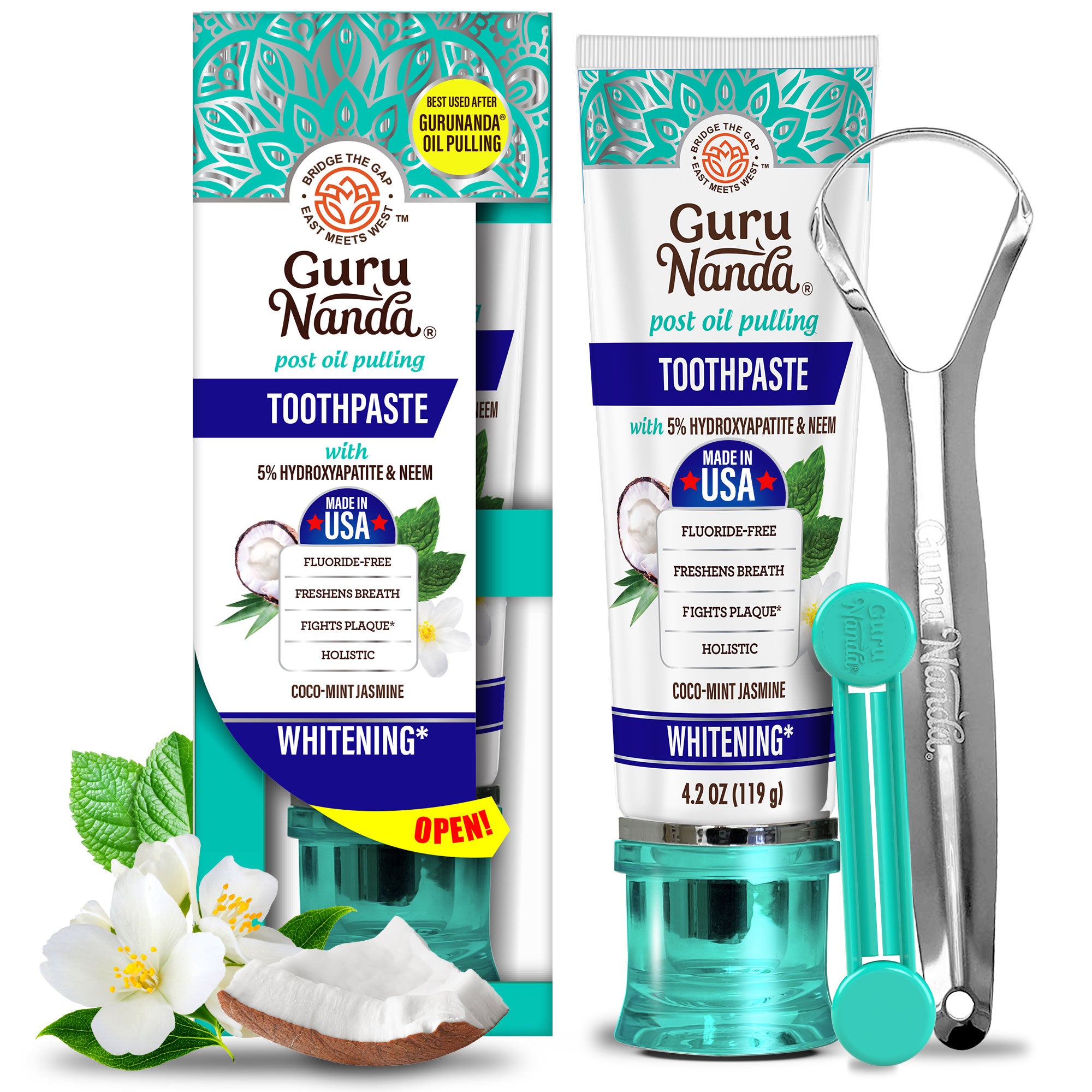








Why Teeth Love Hydroxyapatite
Hydroxyapatite is a building block of your enamel. It mimics the natural structure of your teeth, allowing it to remineralize and protect from the inside out. This ingredient not only strengthens enamel but may also help reduce sensitivity, making it a top choice for anyone looking to maintain both the beauty and health of their smile.

Harness the Power of Natural Neem
Gentle yet powerful, neem gives your teeth the ultimate defense against daily irritants.
Product Reviews
FAQs
What Is a Water Flosser?
A water flosser is a handheld device that uses a pressurized stream of water to remove food particles and plaque between teeth and along the gumline. It’s an effective, gentle alternative to traditional string floss, especially for people with braces, crowns or sensitive gums.
How Does a Water Flosser Work?
Water flossers use a steady, pulsating stream of water to clean between teeth and below the gumline. This combination of pressure and pulsation helps loosen food particles, disrupt plaque and flush out bacteria from hard-to-reach areas.
GuruNanda’s Advanced Water Flosser 2.0 works by generating up to 1800 water pulses per minute and delivering up to 150 PSI of targeted pressure through a detachable nozzle. You can choose from soft, normal or strong modes to match your comfort level.
Is Water Flossing Effective?
Yes, studies have shown water flossing to be effective at controlling plaque and supporting overall oral health. In one clinical study, participants who added water flossing to their routine had significantly less gum inflammation and bleeding than those who only brushed. The water flosser group also showed fresher breath and a healthier balance of oral bacteria.
Can a Water Flosser Damage Gums?
No, there isn't a risk of gum damage as long as you use the appropriate pressure and follow your manufacturer’s instructions.
Can a Water Flosser Replace Traditional Flossing?
It depends on your needs. Traditional dental floss is great for cleaning tight spaces and removing plaque your toothbrush can’t reach, especially if you’re not experiencing gum problems. But if you have braces, bridges or find string flossing difficult, a water flosser can be a useful alternative. It uses a stream of water to help remove food particles and reduce plaque, making it a helpful tool for supporting oral hygiene when flossing isn’t practical.
There is clinical evidence that they are equally effective at removing plaque. For best results, we recommend you start with manually flossing and then use a water flosser for a deep cleaning.
How Do You Use a Water Flosser?
While instructions can vary by manufacturer, most water flossers follow a similar routine: fill the reservoir with water, select your preferred tip and choose a comfortable pressure setting. Lean over the sink, place the tip in your mouth and guide it slowly along the gumline, pausing between teeth. When finished, empty and rinse the tank for proper maintenance.
Do You Water Floss Before or After Brushing?
There’s no strict rule — what matters most is consistency. You can water floss before or after brushing, depending on what fits best into your routine. Choose a time when you can give your mouth the attention it needs, and make sure you’re cleaning thoroughly either way.
How Often Should You Water Floss?
For best results, water floss once in the morning and once in the evening. Twice daily use helps remove plaque and support overall gum health, especially when paired with regular brushing. Like traditional flossing, making it a consistent habit is key to long-term oral health.
Can You Put Mouthwash in a Water Flosser?
Yes, you can — just make sure it's designed for that use, like GuruNanda’s Advanced Water Flosser 2.0. For a refreshing boost, you can add a few drops of GuruNanda’s Concentrated Mouthwash to the water tank before flossing. It’s an easy way to enhance your routine with added freshness and natural ingredients.
Can You Share a Water Flosser With Another Person?
It’s not recommended to share a water flosser with another person. Even if you swap out tips, sharing the device itself can increase the risk of bacterial contamination. For safe and hygienic use, each person should have their own water flosser.
How Do You Clean a Water Flosser?
It's best to follow the manufacturer’s instructions for cleaning your water flosser. Regular cleaning typically includes emptying and drying the water tank, rinsing the tips and occasionally disinfecting internal components to prevent buildup or bacterial growth.
GuruNanda’s Advanced Water Flosser 2.0 makes cleaning easier with a built-in UV Mode that sanitizes the tank and tips in just 90 seconds using UV-C light. Simply press the button after flossing to start the hands-free cycle — no extra cleaning station required.

















